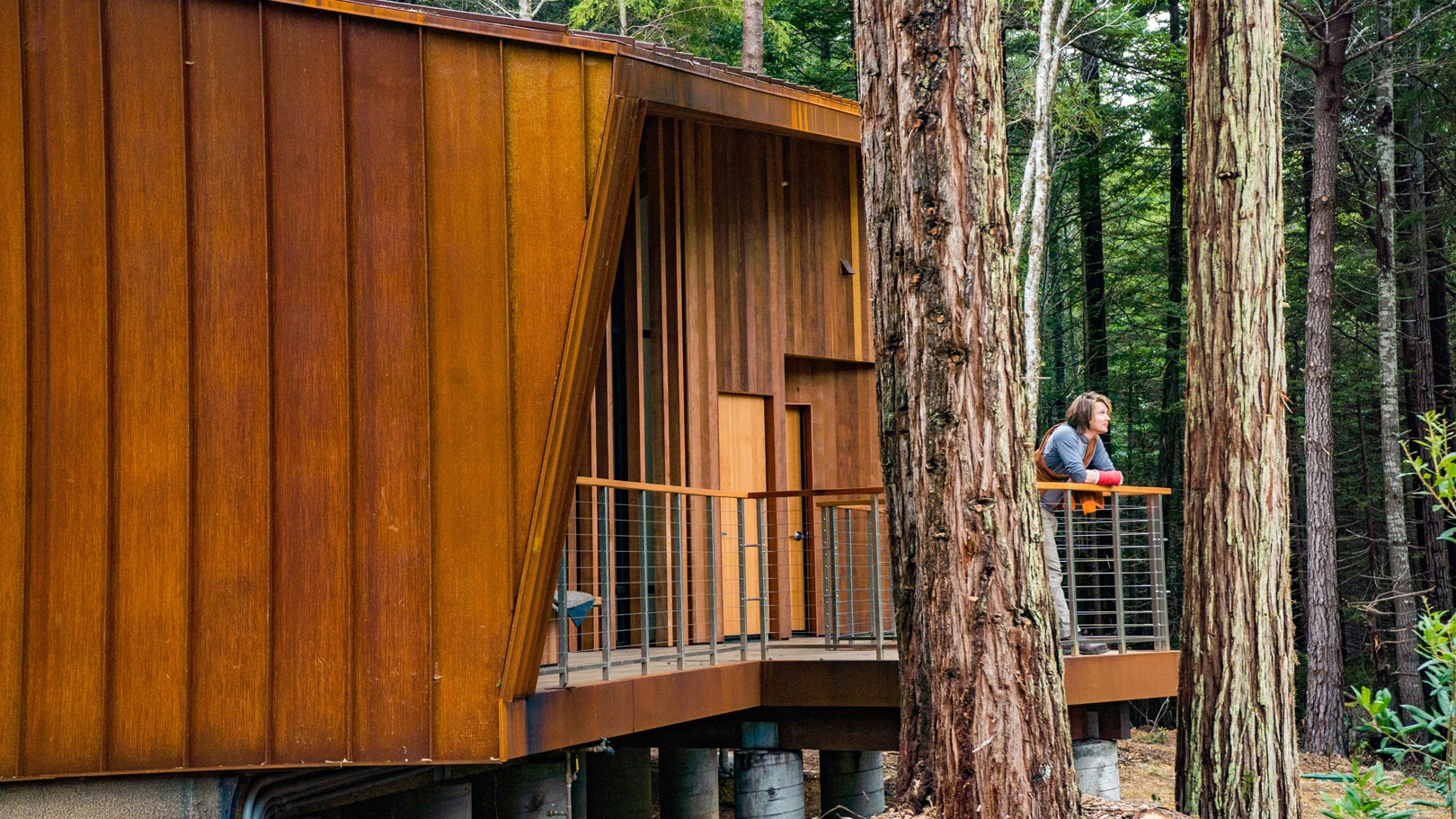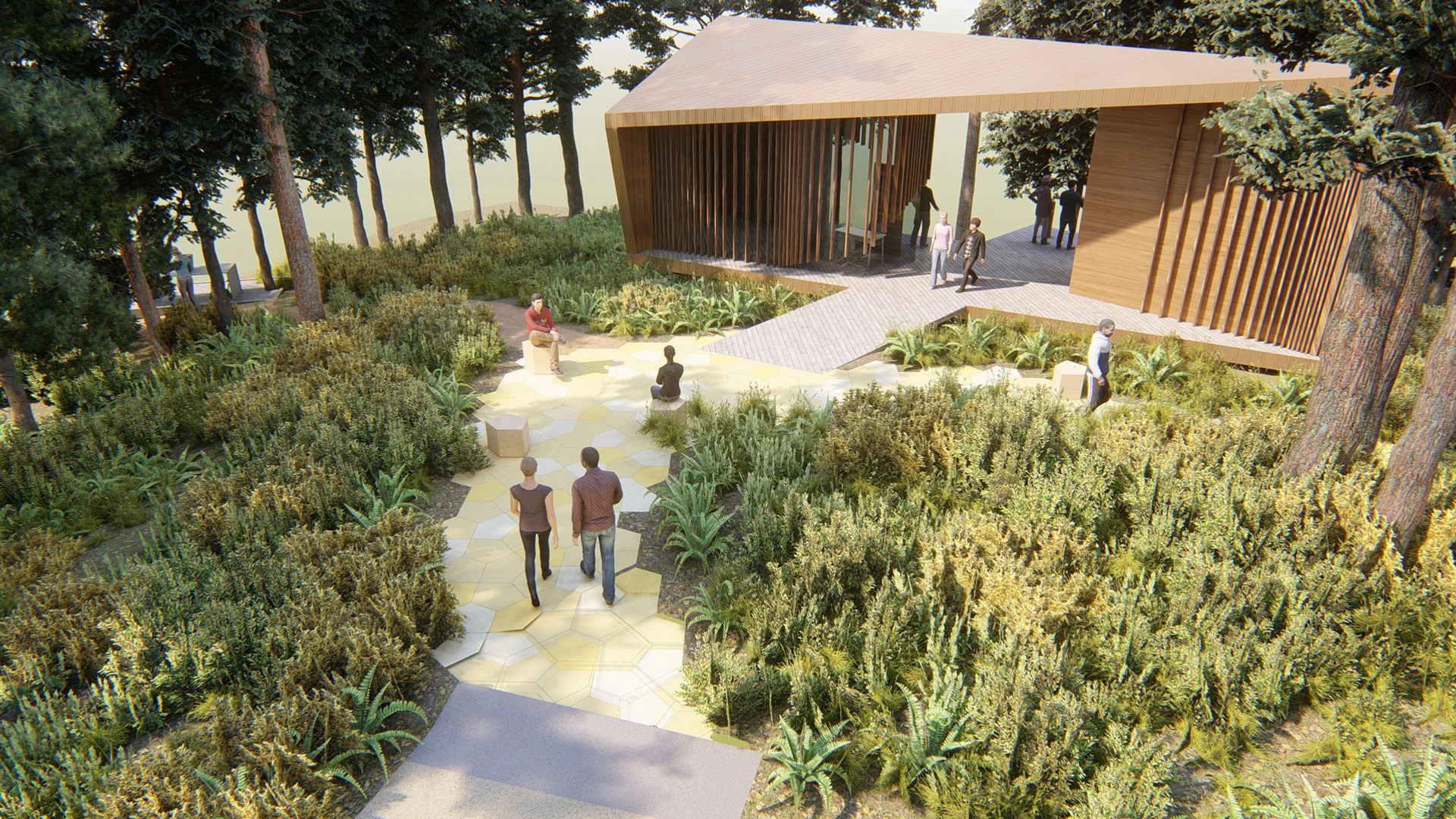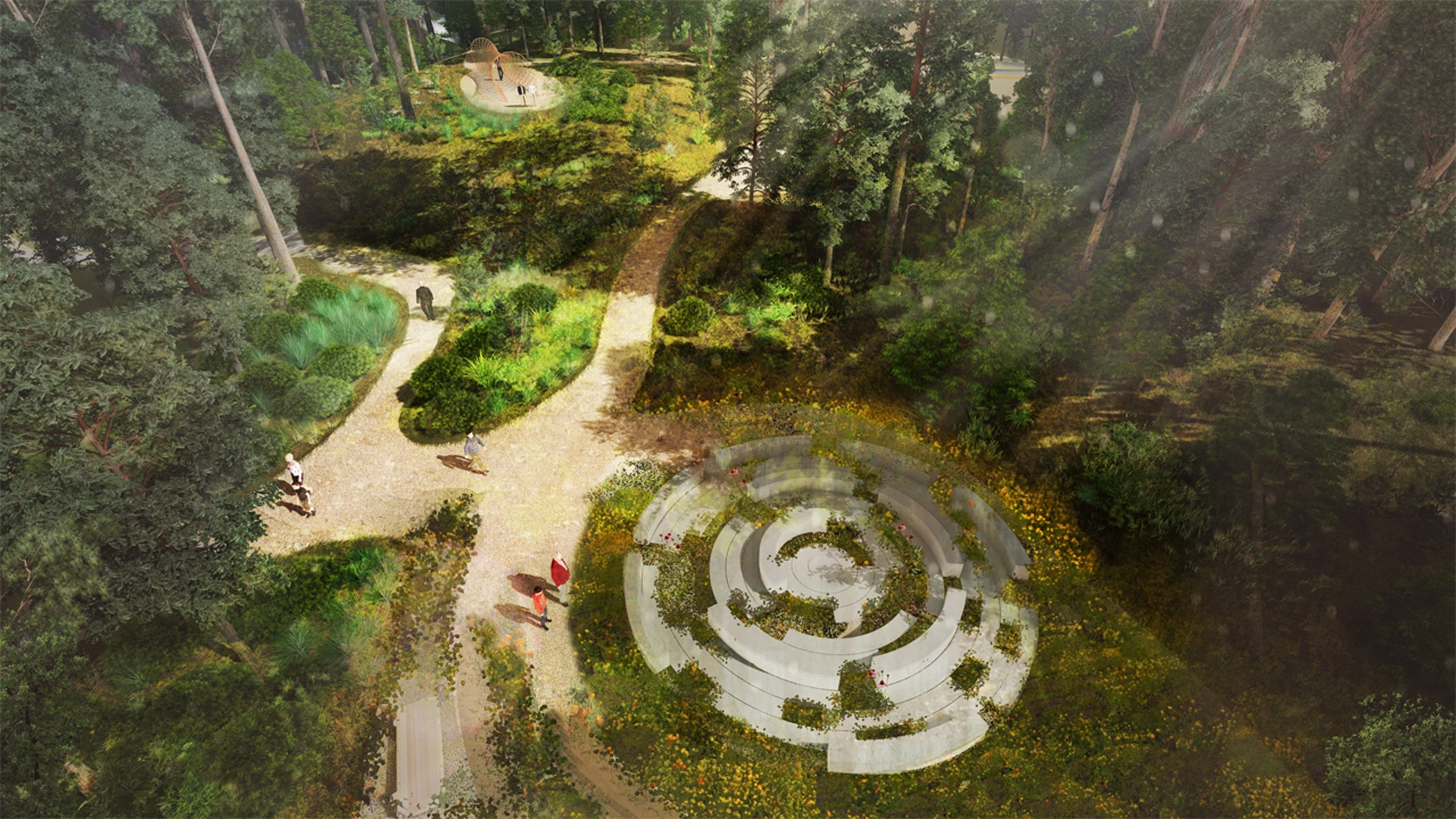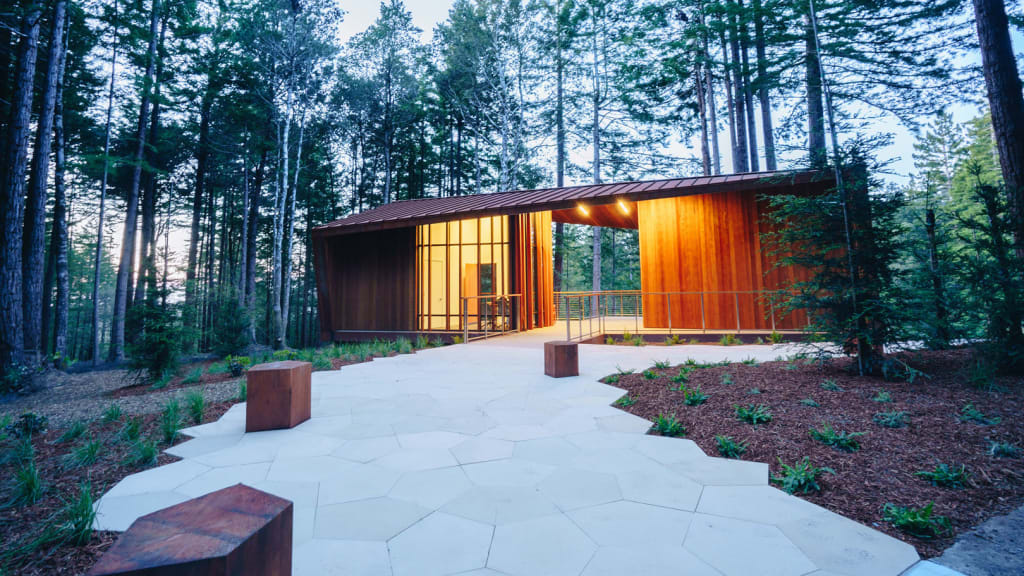Sandy Gibson hates cemeteries.
The serial entrepreneur, who lost both his parents at a young age, had been making regular trips to visit his family grave, which was located at the edge of a cemetery next to a busy road. His family had chosen a beautiful polished granite tombstone, which had seemed like a good idea at the time. But that means that every time he pays homage to his parents, Gibson sees the reflection of cars rushing down the street on the slick surface of the gravestone. “I knew it didn’t feel like the right place for them,” he says.
Gibson knew he couldn’t be alone. The end-of-life experience for a family is a dreadful one. Not only have they lost someone they love, but cemeteries are expensive (and are running out of space). A 2017 study from the Bureau of Labor Statistics reveals the cost of dying—$7,360 on average for funeral services and burial—has risen 227% since 1986 (compared to 123% for all goods). Today’s $14 billion death industry is catering to an increasing secular country: A 2017 survey by the National Funeral Directors Association found that only 39.5% of respondents are being buried in ceremonies with a religious component, and more than half of respondents are interested in green burial options. Cremation is on the rise.

And now, thanks to Gibson, you can buy the rights to sprinkle your ashes underneath a redwood tree.
Gibson and co-founders Brad Milne and Jamie Knowlton have raised more than $12 million to design a new kind of cemetery: a forest. This month, they launched their first 20-acre forest, located in Mendocino, California. Instead of spending thousands on a funeral plot, families can spend thousands for the exclusive ash-spreading rights to one of the thousands of trees on the property (private trees start at $2,900, and the rights to put ashes underneath an old redwood tree can cost up to $36,000). The trees are guaranteed to be permanently protected, because the duo’s venture-backed startup, Better Place Forests, purchases the land and then donates the development rights to a permanent land trust. The process by which the company is doing this, in which the company owns the land and a land trust owns the easement, or the right to develop it, is very well-established and has been used to create national parks in Hawaii and Colorado (though a future change of ownership makes it unclear if family members would always be able to visit).
But beyond just offering people the knowledge that they will end up in a beautiful place (and that they’ll contribute to land conservation while doing it), Better Place Forests wants to serve the same role that cemeteries have for centuries: It’s a place for individuals and families to hold a funeral service and to return so they can mourn those they’ve lost. “Typically ashes come in a plastic bag. It’s not a beautiful experience,” Gibson says. “So we try to make the whole experience better for the family.”

That experience starts with the visitor center. At the Mendocino property, called Point Arena, the building sits low on the landscape, with a large opening at its center that acts like a portal to invite people into the forest. As people pass through the opening, they emerge onto a deck that overlooks the forest and what will soon be a memorial made of concrete benches arranged in a circular manner, to evoke the rings of a tree (it was designed by the San Francisco-based studio Matsys). The ocean is visible in the distance.
“It doesn’t function exactly like a visitor’s center in a state park—it’s more of a sacred experience,” says Mark Hogan, the principal at design firm Openscope who designed the visitor’s center along with San Francisco-based Fletcher Studio. His firm deliberately used redwood and weathered steel so that the building would blend into the forest. “It’s all very in keeping with the surroundings so you feel like it’s been there forever already when you first visit.”
Most of Better Place Forests’ thousands of clients so far have been people who want their families to spread their ashes under a tree, which they’ve already picked out (and paid for) themselves. According to Gibson, some people choose trees near the visitor center with the idea that their families will come visit them there. Others want a tree that’s deeper in the forest or that sits on a ridge overlooking the Pacific. It’s a way for people to choose their final resting place in a beautiful natural setting, rather than in a squeezed cemetery.
This attention to redesigning the entire experience around death and burial, which begins with choosing the tree, extends to the way that Better Place Forests arranges what the company calls “spreading ceremonies.” Behind the scenes, the Better Place Forests team prepares the ashes by mixing them with local soil and natural supplements to break down the ashes into nutrients for the tree more quickly. The ceremony itself includes the spreading of ashes, some poetry reading, and the marking of the tree using a round bronze emblem made of adapted survey markers used by the federal government that’s engraved with the person’s name (and the company’s logo).

Better Place Forests currently owns seven properties located around the western United States and is in the process of transforming each one into a memorial forest. The company hires botanists who catalog the forest, clearing out invasive species and assessing the well-being of each tree to ensure that the company is only selling healthy trees. If your tree is to die, Better Place Forests will plant another one of the same species in its place. A team of landscape architects and designers will build a visitor’s center on each property using natural clearings, so that as few trees as possible are harmed.
In Mendocino, professional trail builders who usually work in national parks spent an entire month carving trails into the forest to make it as accessible as possible (Better Place Forests provides transportation within the forest for those in wheelchairs and is ADA-compliant). In that forest, which was formerly logged and has regrown, many of these trails use the bones of old skip roads that loggers used to haul the giant redwoods out of the forest.
“Within the forest we were really guided by the nature of the landscape itself,” says David Fletcher, the lead landscape architect at San Francisco-based Fletcher Studio who is overseeing design for all of Better Place Forests’ properties.
His team custom-designed every human-made element of the forest, including a subtle wayfinding system and simple concrete benches that are arranged in natural clearings. But for visitors, walking around this new age cemetery is supposed to feel just like a nature walk. “It’s exactly like hiking, but we think there’s the emotion that you’re walking through this sacred forest,” Fletcher says.

As people hike through the memorial trees, they eventually end up walking up a small hill where the designers created a pergola, a tunnel-like trellis covered in vines that opens out on a view of the sea. “It’s meant to be a complete journey, where you’re dealing with collective memory, individual memory, and then you come up on this knoll where you see the ocean, you see the infinite,” he says.
Right now, people can purchase trees at Point Arena and in a forest in Santa Cruz, California, which is about an hour from San Jose. Point Arena is the only property that’s officially open: The company started doing spreading ceremonies last fall, and recently opened the forest’s visitor center.
Beyond providing a more beautiful funeral experience, Better Place Forests is also a conservation effort. Along with donating the development rights to land trusts that can guarantee they won’t be developed, Better Place Forests plants more trees for every tree that its customers claim. For those who buy older, more expensive trees, the startup will plant hundreds of trees in a forest that was recently swallowed by the fires that have wrecked California in the last few years. “They’re taking 20 acres of land out of the logging industry forever,” Fletcher says. “It’s never going to be developed as a housing project. That’s the power of this.”
Still, some customers may shy away from the idea that venture capitalists are trying to make money off their final resting place. Others may feel nervous about whether Better Place Forests can truly guarantee that these memorial trees will never be bulldozed. There’s some assurance in the fact that even if the company does sell the forest, future owners will have to abide by the same development rules. However, that doesn’t mean that another owner would still provide family members access to their loved one’s tree, though the company says that there are stipulations to ensure the property remains open space and the company has created a conservation endowment to fund maintenance.
In any case, the startup has clearly tapped into a desire for a greener, more personal kind of funeral: Thousands of families have already reserved trees. In a time when conservation is becoming increasingly urgent, it’s rather poetic to protect a tree with your remains, secure in the knowledge that more are being planted in your honor.
Recognize your brand’s excellence by applying to this year’s Brands That Matter Awards before the early-rate deadline, May 3.









